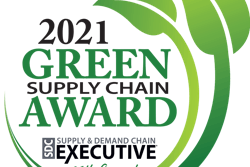
Companies’ supply chains are often responsible for more than 90% of their greenhouse gas (GHG) emissions, making it a key area of focus for firms trying to improve environmental performance and participate in global efforts to mitigate climate change and minimize environmental impacts. Many companies are now exploring how their supply chains can improve, from how they select suppliers to how they monitor performance. These efforts raise new considerations for in-house counsel as they work with sustainability professionals to improve environmental performance and keep business objectives on track.
In a recent survey of top decision-makers by Crowell & Moring, nearly 80% of responding companies say their companies have implemented environmental performance goals beyond what regulations require. Fewer than half report they are not measuring performance against these goals and in some cases are struggling with implementation.
In the area of supply chains, the news was similar. Nearly 58% of companies said they have set organizational goals for improving the environmental performance of their supply chain, while 33% of firms reported measuring their supply chain sustainability. And, respondents also cited key challenges their organizations are facing as they seek to improve environmental performance, from increased costs due to enhanced practices to the difficulty of measuring and holding suppliers to verifiable standards.
Here are some key considerations for in-house counsel as they navigate this developing area.
Start at the top
Without a clear plan from company leadership, it is difficult to signal commitment to your diverse supply chain that environmental performance is now a core driver for your company. According to a Harvard Business Review article, companies that successfully promote their environmental responsibility practices may institute long-term sustainability goals and communicate those commitments to employees, branches and suppliers. Clear direction for personnel, production and contracting practices is essential.
It is also necessary for leadership to set clear benchmarks in order for employees to understand what the priorities are and to be able to measure their own progress to goal. Likewise, if leadership chooses to report progress toward environmental goals to investors using rigorous and voluntary reporting standards such as those put forth by the Sustainability Accounting Standards Board, the company will both express to employees and stakeholders the importance of achieving its environmental aspirations.
Review your supply chains
Second- and third-tier suppliers often represent the greatest threat to a company achieving its environmental goals. While it is easy to communicate your environmental pledges to first-tier suppliers, it is often more difficult to get in touch with the suppliers’ suppliers to ensure they are also meeting your company standards.
Financial losses and harm can occur to a company’s brand when it fails to adequately ensure a thoroughly sustainable supplier network. Evaluate your suppliers for specific criteria and obligations linked to environmental performance. Issue request for proposals (RFPs) for new or renewed contracts with measurable criteria and reporting metrics linked to environmental performance. If feasible, link specific renewal, price or financial components to performance, and ensure contracts include termination provisions for violations of key environmental standards.
Leverage design
Redesigning products for longer use, re-use and recyclability is critical to reduce environmental impact. While redesigns can be difficult and costly, 80% of a product’s environmental impact is determined during the design stage, making redesigns a key opportunity for sustainability and long-term profitability. Depending on what your firm’s goals are, a product may be redesigned to have longer life, to be able to be recycled, to be more energy efficient and be packaged more efficiently, along other beneficial changes that will improve your firms’ performance and standing.
Monitor, measure and move
Even more complex than quality control, effective measures to monitor environmental performance can be instituted since failure to account for environmental practices is not always seen with the end product as delivered. Problems are most likely to surface in months, years or decades after the failure. Not only does this risk reputational and financial damage, but it presents long-term potential risk due to uncertain liability, changing enforcement regimes within a country or harms to communities that may present persistent or generational challenges.
Know your markets
Knowing the level of rigor behind environmental regulation of the country from which you source goods and services is an important step toward ensuring sustainability. The existence of effective domestic regulations and effective enforcement in-country can be critical backstops to your company’s commitments. Consider assessing in-country and the on-the-ground practices of suppliers abroad and compare those against benchmark assessments.
Train and reinforce
Environmental performance objectives and metrics will change over time as new information, requirements and expectations are forthcoming and as you learn from industry successes and shortcomings. When conveying changed expectations, equip employees and suppliers with the information, training and tools to meet rigorous expectations. Green training has been found to be successful in helping firms reach environmental targets sooner and increase profits. Whether it is with in-house resources, industry organizations or toolkits benchmarked against expert-developed performance measures, effective training must be regularly enforced.
Additionally, consider providing training resources that you have developed for your own staff to your own suppliers. This can ensure conformity and standardization between your workforce’s green practices and those of your supplying community.
Conclusion
As companies face increasing pressure to improve their environmental performance, in-house counsel may find themselves more involved with assessing and monitoring supply chain environmental performance than ever before. These key considerations may help build a foundation for a greener supply chains in the years ahead.

















